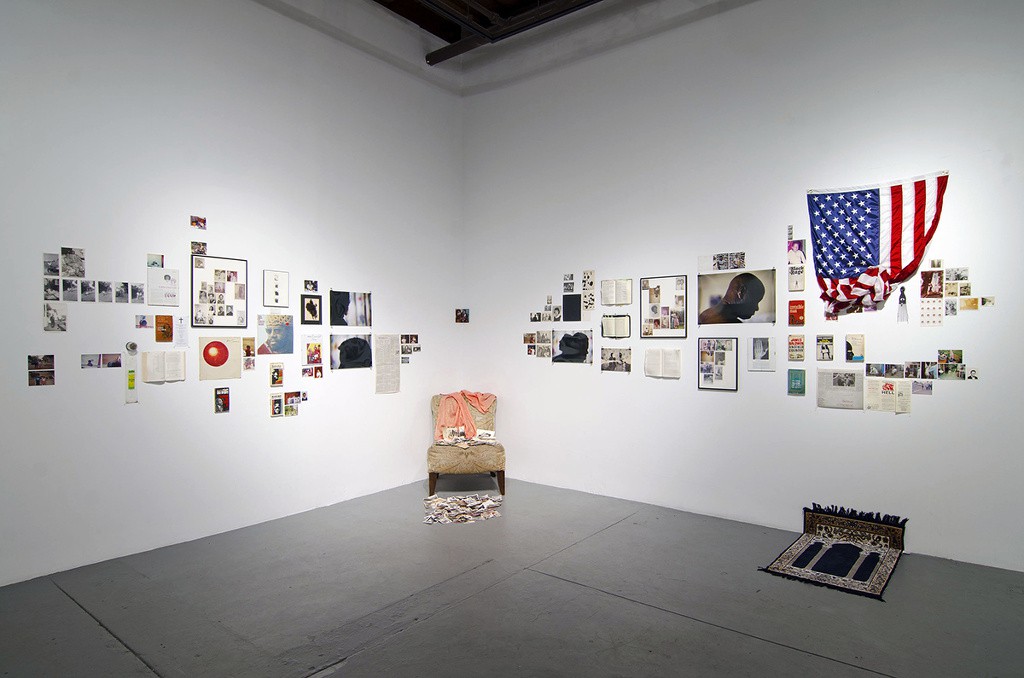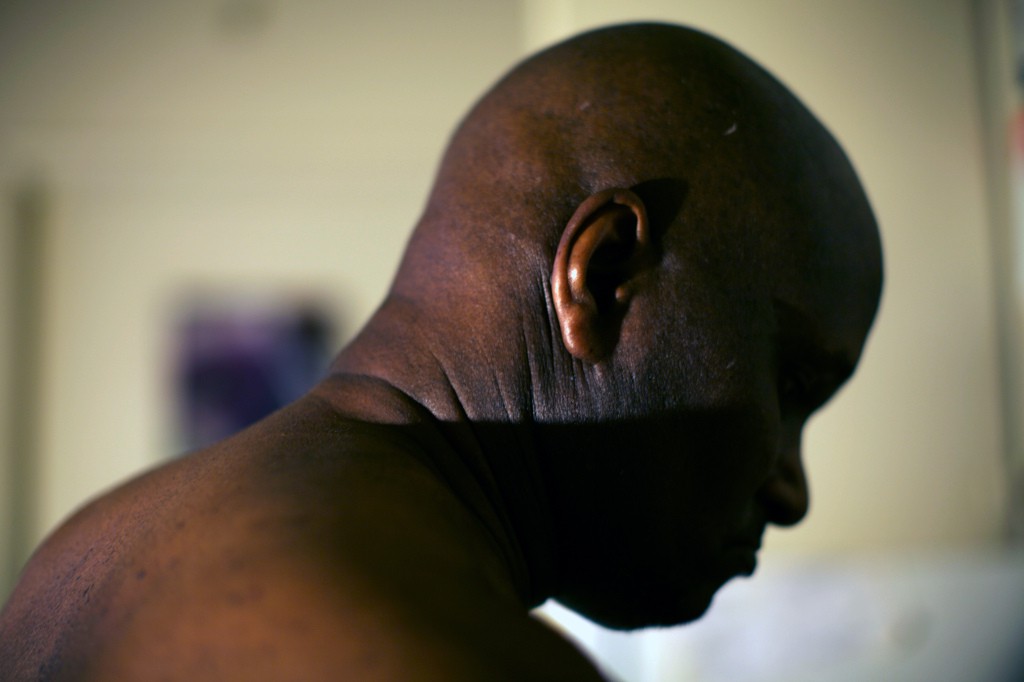
Kameelah Janan Rasheed. No Instructions for Assembly I, 2013; installation including found objects, texts, and photographs; dimensions variable. Courtesy of the artist. Photo © John Groo.
The artist Kameelah Rasheed was twelve years old in 1998, when her family—mother, father, and four brothers—had lost their home. The value of land in northern California near East Palo Alto had substantially increased, and as a result, the family was evicted from the property they were renting. Her parents tried to fight for their home, but the court case was settled in the landlord’s favor. Homeless, Rasheed began to build a personal narrative about displacement.
Nearly two decades later, in February 2014 at Rasheed’s apartment in the Crown Heights neighborhood of Brooklyn, the artist and I talked about how her work No Instructions for Assembly emerged from this adverse circumstance. Drawing equally from Rasheed’s personal experiences and from other research, this ongoing work delves into the intricate process of the fragmentation of history and the idea of an artist’s archive and historiography. The title hints at the difficulty of assembling this type of archive coherently or interpreting it didactically. Rather, Rasheed’s archive is a nonlinear narrative device and an ongoing meditation on the meaning of home and the politics surrounding homelessness, as well as an examination of how history is constructed and revisited.
For ten years, while Rasheed lived in a series of nontraditional homes, she aggressively collected things. As her family moved through temporary shelters and motel rooms, Rasheed carefully amassed remnants of all the various places that she had known during this time. These artifacts of the trauma of displacement were placeholders for the psychological comfort of stability. As an adult, Rasheed became more selective about the sources of the materials she was gathering for her growing archive. She mined institutional archives, eBay, flea markets, estate sales, and dumpsters. Rasheed’s impulse to collect, originating as a mechanism to cope with the trauma of being displaced, developed from making an archive to making art.
In 2012, when she was awarded a grant for emerging artists from Real Art Ways in Hartford, Connecticut, Rasheed began to investigate how her collection of artifacts could function as a whole. Rasheed wanted her loose taxonomies to form an explicit and deliberate installation. “I finally arrived at something that felt like a domestic space but also like a library that had been exploded onto the wall,” she said. The following year, more than six hundred items, including hair samples from family members, photo albums, newspaper clippings, jewelry, collages, photographs purchased from eBay, and prayer beads composed the first installation of No Instructions for Assembly at the Real Art Ways gallery.

Kameelah Janan Rasheed. No Instructions for Assembly I, 2013 (detail); digital chromogenic print; 16” x 24”. Courtesy of the artist. Photo © Kameelah Janan Rasheed.
Since this 2013 show, Rasheed has erected six iterations of this work in spaces that have ranged from a traditional gallery to a low-income housing unit in the Sugar Hill neighborhood of Harlem. In the latter installation, the fourth iteration, Rasheed invited the audience to engage directly with her archive, which had at that point swelled to more than fourteen hundred found, fabricated, and collected objects. Viewers charted individual histories by installing their own objects, photographs, and other materials. The audience’s participation represented an expansion of Rasheed’s personal experiences and a visual parallel of how one story is intertwined with a larger narrative.
For the seventh and most current iteration of this work at Vox Populi Gallery in Philadelphia, Rasheed has focused on found texts and her own writings. She wants to slow her audience down by externalizing the discursive nature of her thought process. Rasheed, who is fascinated by how one thought can jump to a seemingly unrelated one, has observed that the patterns and evidence of thought behind her work can become obscured if the art product is prioritized over the process. The physical spaces of Rasheed’s installations are domiciles for investigation and contemplation. “There should be some intellectual labor involved with looking at art,” Rasheed stated. In the seventh installation of the archive, Rasheed grapples with the weighty concept of a home as it relates to citizenship and the notion of feeling at home in America.
“America has an obsession with this idea of progress,” she said. “History is so messy, but there’s a compulsion to make things tidy.” Rasheed’s ongoing work endeavors to make transparent the residue of conflicting histories and the multiple facets of storytelling. She favors stories that have been muted and marginalized over neat timelines and convenient labels. The artist’s archive and the iterative work No Instructions for Assembly visualize the complexity of a collective narrative as well as an individual’s experience of and relationship to history.
Kameelah Rasheed (born 1985) was a 2006 Amy Biehl Fulbright U.S. Scholar to South Africa. Rasheed holds an Ed.M (2008) in secondary education from Stanford University and a BA (2006) in public policy and Africana studies from Pomona College. She lives and works in Brooklyn, New York.



